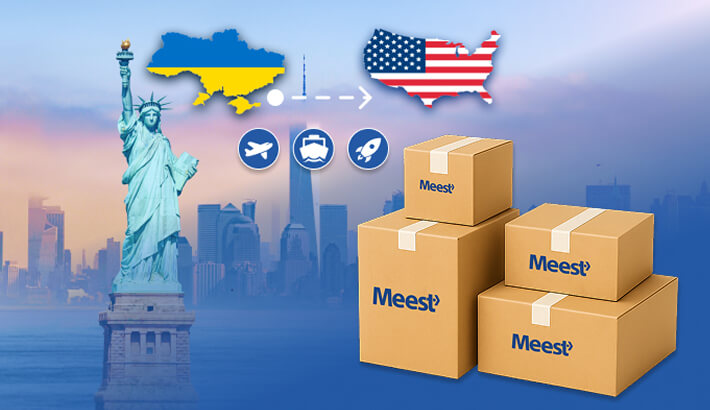


Avoiding Hidden Fees: Understanding Duties and Taxes on International Shipments
International shopping has become better these days. Now, we don’t have to wait for imported items to arrive at the nearest store — we can import them ourselves. Whether you are a store in Paris looking to deliver to the U.S. or a buyer in China searching for goods in Canada, international shipments make it possible with a click of a button. Yet, you have to be aware of potential delivery costs.
Handling fees, duties, taxes, and more can instantly ruin a purchase. These hidden charges come as a surprise during transit or upon delivery, and should be accounted for when the order is placed. We will dive deeper into the difference between those costs, find out why they arise, and help both sellers and buyers avoid them.
The Core Charges: What Are Import Duties and Taxes?
New sellers and buyers in e-commerce often treat delivery charges as mysterious and “hidden.” Yet, these are mostly classified as fundamental costs and include customs duty and import taxes. Let’s unpack them first.
What is a Customs Duty?
A customs duty is a tax that the destination country requires when goods are imported from other countries. It can also be referred to as import duty, tariff, or import tax. Customs duty is imposed on items to collect revenue, regulate trade, and instill fair competition between domestic and foreign products.
The rate applied to the items depends on the type of the item, its country of origin, its HS classification, and other factors, such as various trade agreements. Customs officers always evaluate the item as it crosses the border to impose a certain duty. Calculation can vary depending on the value of the goods, insurance, and more — we will discuss this next.
How are Duties Calculated?
Customs representatives follow the domestic rules on imports when setting a duty on items. Usually, they follow the next steps:
- Classifying the item according to a harmonized system code to avoid delays, overcharging, or undercharging the seller.
- Studying the parcel’s invoice, shipping costs, insurance, and other factors to determine the value of the item.
- Applying the duty rate to the value of the item.
- Adding other tariffs, if applicable.
- Rounding the tariff or imposing a minimum duty, if applicable.
Although these are the common steps for imposing customs duty, they can greatly vary according to the local rules and regulations. Every country has its own processes and may evaluate the items differently.
What are Import Taxes?
Customs duties are not the only payment your parcels will be charged with at the border. Import taxes, also referred to as VAT (Value-Added TAX), GST (Goods and Services Tax), sales taxes, and customs taxes, are applied to all imported goods. They also vary depending on the country of destination. For example, almost everything imported into the EU is charged with VAT, as long as it's above the de minimis. This cost is called GST/HST in Canada.
The import tax is calculated as a percentage of the item value and its duty. So, you are basically charged tax on tax. When shipping internationally, customs duties and import taxes are the two biggest portions of the “hidden” fees you have to pay.
The Concept of De Minimis Value:
The de minimis value is a threshold that determines whether parcels are subject to duties and taxes. Under the de minimis, some items are exempt from customs charges, but it’s extremely different for each country. For instance, the U.S. customs have always dictated that goods under $800 are exempt from international shipping duties and taxes. In August 2025, however, this rule was abandoned.
In the European Union, on the other hand, the threshold is €150, but VAT still applies to all imported items. In some countries, the de minimis is under $20, so it’s more of a formality than an actual helpful tool. Before relying on the minimis, always research the topic for your country of destination. Otherwise, you risk being overcharged or even fined for not paying the incurred fees.
Uncovering the “Hidden Fees”: Other Common International Shipping Charges
Once you receive a shipping invoice, you will notice that some charges are not just customs duties or taxes. They can also include other costs applied by carriers, brokers, or customs officers. Here are the most common ones that both sellers and buyers should know about.
Customs Brokerage Fees:
Some customs processes are complicated, so companies and individuals hire professional customs brokers to ensure a smooth delivery and compliance. In some cases, carriers, such as a courier service Meest, can act as a broker. The fees you might see on the invoice include:
- communication with customs representatives;
- declaration filing;
- handling inspections;
- processing returns.
Custom brokerage fees are often pre-calculated by the services, depending on the item value. Yet, the recipient might not realize they have to pay until their parcel is released by customs and the invoice arrives. If they face complications, the broker can incur additional costs.
Advancement or Disbursement Fees:
An advancement or disbursement fee is a cost that the importer pays their carrier to handle the import duties and taxes. They act as a third party and pay right away, which helps the package clear customs faster. Yet, when the payment is collected from the recipient, it can be quite steep.
The process is convenient, but you should always contact your carrier and ask them about the fee in advance. Sometimes, it can be surprising and become a “hidden” cost for the recipient.
Storage and Warehouse Fees:
Not all shipments pass customs smoothly. Some are delayed or have to be inspected at the border. When that happens, customs or carriers might move the items you sent internationally into storage, which also triggers fees. They can be hourly or daily, and the cost depends on the country of destination and the type of items you’re shipping.
Most commonly, perishable goods and high-value parcels are the most expensive to store. When importing, the sender or the recipient might confuse it with “hidden” costs caused by delays.
Currency Conversion Fees:
All import payments come in the local currency. So, carriers and brokers convert all duties, taxes, and fees into domestic currency when paying and sending the invoice. The conversion fees can be pretty unfavorable for the sender and the recipient of the parcel. So, when the duties and taxes on international shipments are small, the conversion fee applied by the third party can be a surprise cost, which is often underestimated.
Handling Fees:
The invoice can also include other fees for handling, processing, and customs operations. You might be charged for inspection and scanning of the items, customs clearance, and other actions. These are usually included in the carrier’s prices and appear as “customs fees” on the invoice.
A Practical Guide to Avoiding Surprises
Thankfully, surprise costs can be avoided. Yet, this asks for a comprehensive strategy from both the seller and the buyer. Below, we will unpack what e-commerce businesses, shippers, and recipients can do to minimize hidden fees.
For Shippers and E-commerce Businesses
Calculate the landed cost of the delivery before quoting recipients. Include all duties, taxes, brokerage, and handling fees, and account for potential storage and currency conversion. Use applicable tools or hire a logistics company to know the charges and stay transparent with your shoppers. Always display the cost at checkout.
Additionally, remember to learn and use the correct HS codes when selling items. Always state the accurate value of the item. Failing to classify and value your goods correctly can lead to penalties, fees, and other hidden costs for your recipients.
Choose applicable Incoterms when listing goods on your page. DDP (Delivered Duty Paid) means the sender pays and manages everything, which lifts the burden off the consumer. DDU (Delivered Duty Unpaid)/DAP means the recipient pays and manages the import, which minimizes the sender’s risk. Most shippers let the recipient select what’s more convenient at checkout.
If you’re still not sure what’s best, work with a reputable customs broker or a courier service. Companies with international logistics knowledge will help you organize your shipments, stay compliant with customs rules and regulations, and avoid overcharges when shipping to your shoppers. They can also track regulatory changes, such as the de minimis, to understand how to process imports correctly.
Lastly, put your items into segments based on their cost. If you want to minimize risks, sell high-value goods only locally. Low-duty goods can be shipped internationally, though.
For Recipients and Online Shoppers
Recipients should be up-to-date with their domestic rules and regulations on imports. That means you should learn about the de minimis, if applicable, and know when VAT or other taxes apply to your shipments.
When placing an order, always check the shipping terms beforehand. If the seller offers DDP, they will take on all the responsibility until the items reach your home. If they insist on DDU/DAP, though, you’ll have to pay duties and work with customs. Choose the latter only if you are fully confident in your capabilities.
Ask for a clear and transparent cost breakdown on your invoice. Make sure the seller or a carrier states how many duties, taxes, brokerage, and handling fees you are paying. To make the delivery more convenient, work with postal or courier services like Meest that let you prepay fees in advance. Then, you won’t be surprised to see an extra charge when accepting the delivery.
In case the carrier or customs representative contacts you, regarding the fees, make sure to respond and pay right away. Delaying the payment can trigger additional charges, and your shipment can be returned to the sender. When something is wrong, don’t be afraid to contact the customs or broker responsible for your parcel, as it can help streamline the process.
Conclusion
International shipments are an amazing opportunity to sell and buy cheap or unique items from abroad. Yet, hidden fees, duties, and taxes can upset recipients and harm you. Understanding the main types of fees applied to international parcels is the key to minimizing surprises. Moreover, knowing the thresholds, like the de minimis, is a substantial skill in setting a competitive edge for your goods.
As a sender, once you learn how to calculate brokerage, handling, and storage fees, you can present transparent delivery prices to your recipients. And as a recipient, studying your domestic import rules and common delivery terms can help you avoid unpleasant costs when accepting a parcel.
Remember to stay up-to-date with the international trade landscape and customs rules across the globe, and you will quickly find individuals interested in your items abroad. It’s all within an arm’s reach.

















